
Australian Journal of Chemistry
Volume 73 Number 4 2020
Dedication to Professor Paul Alewood
The foreword to this special issue of the Journal dedicated to Professor Paul Alewood provides an account of his distinguished career and his pioneering work in the fields of peptide, protein, and medicinal chemistry.
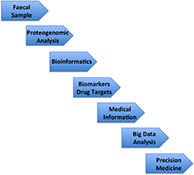
This article will discuss the history behind the uses of faecal material, particularly its role in medical diagnosis. Faecal proteomics and other omics technologies (proteogenomics) are reviewed, including studies on the microbiome, in order to understand, identify, and treat diseases of the gastrointestinal tract and assist the drive towards personalized medicine.
CH19225 Abstract | CH19225 Full Text | CH19225PDF (746 KB) Open Access Article

Designer leptin receptor agonist and antagonist peptides with their expanded chemical space as well as well controllable receptor binding and elimination properties slowly replace full-sized leptin products in the drug development pipeline.
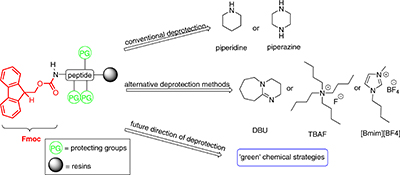
Alternative deprotection reagents together with green solvents in modern SPPS strategies have contributed to the enduring popularity of the Nα-Fmoc group in the chemical synthesis of peptides.
CH19427 Abstract | CH19427 Full Text | CH19427PDF (431 KB) Open Access Article
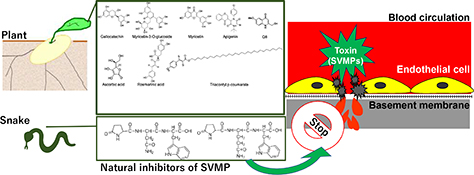
Snake venom metalloproteinases (SVMPs) are responsible for the severe haemorrhage observed in the victims of snakebite envenoming. Natural inhibitors from medicinal plans and animal venoms are sought to block the pharmacological functions of SVMPs. In this review, to understand their inhibitory mechanisms, we focussed on the complex structures of these inhibitors and SVMPs.
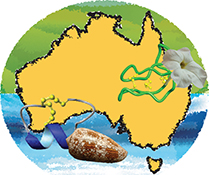
This article highlights the rich diversity of peptides discovered from Australasian plants and animals, both terrestrial and marine. These peptides are typically highly stable and selective and have formed the basis of novel drug leads and eco-friendly pesticides. Such peptides offer great potential as next generation medicines and crop protection agents.
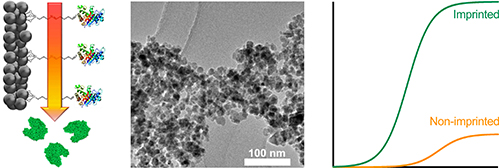
The antibody-like properties of molecularly imprinted polymers offer promise in application areas ranging from separation and sensor development to proteomics and therapeutics. The recent development of peptide and protein imprinted polymers in nanoparticle formats is facilitating progress in these areas.
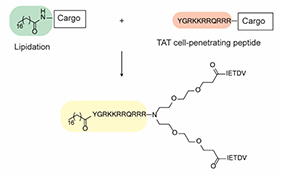
We synthesised and evaluated combining lipidation and conjugation to the cell-penetrating peptide TAT to increase peptide stability and brain permeability in vivo. Even though TAT–lipid combinations were stable in vivo and in vitro and permeated to the brain, they were haemolytic and resulted in acute toxic effects in vivo.
CH19386The Single Disulfide-Directed β-Hairpin Fold: Role of Disulfide Bond in Folding and Effect of an Additional Disulfide Bond on Stability
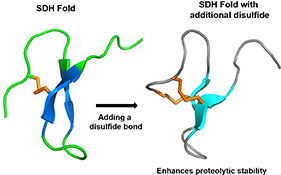
A novel peptide scaffold, contryphan-Vc1, with a single disulfide-directed β-hairpin (SDH) fold, has been shown to possess remarkable thermal and chemical stability, but limited proteolytic stability. In this study, we engineered the peptide by introducing a second disulfide bond that maintained the native fold and enhanced proteolytic stability.
CH19460Chemical Synthesis of an Enzyme Containing an Artificial Catalytic Apparatus
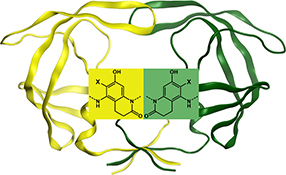
A designed enzyme containing an artificial catalytic apparatus with tuneable electronic properties was prepared by chemical synthesis in order to investigate electronic effects in enzyme catalysis. A prototype of the enzyme accelerated peptide bond hydrolysis by ∼108-fold. This novel approach will enable systematic investigation of electronic effects in enzyme catalysis.
CH19456On-Resin Strategy to Label α-Conotoxins: Cy5-RgIA, a Potent α9α10 Nicotinic Acetylcholine Receptor Imaging Probe
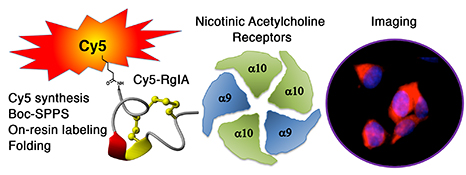
Venom toxins are potent and selective peptides used as pharmacological tools to study complex signalling systems. Here, we established a versatile on-resin strategy to label peptides with a Cy5 fluorophore. Specifically, we labelled conotoxin α-RgIA, demonstrated its nanomolar binding to the α9α10 nicotinic acetylcholine receptors, and used it to visualise these in a macrophage cell line.
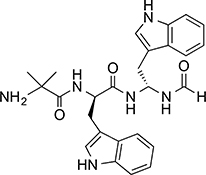
JMV-1843 (tradename Macrilen) is a modified tripeptide, which stimulates the release of growth hormone (GH) by interacting with the ghrelin receptor. Macrilen is the first orally available compound commercialised for diagnosing adult growth hormone deficiency (AGHD). The test appears to be reliable, well tolerated, and simple. The story of JMV-1843 in the laboratory to Macrilen in the market is summarised.
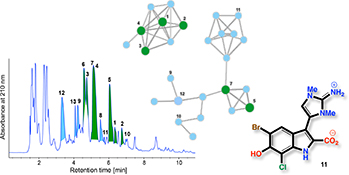
A molecular networking strategy fast-tracked the discovery of trachycladindoles H–M (8–13), new examples of a rare class of indole alkaloid with promising kinase inhibitory properties, from a Great Australian Bight deep-water sponge, Geodia sp.
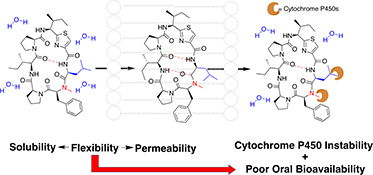
Three cyclic peptides, reported to have high cell membrane permeability, show low oral bioavailability and high clearance rates in this study. NMR, molecular dynamics, and circular dichroism studies reveal that higher flexibility correlates with improved permeability but also results in metabolic instability that limits the oral bioavailability of the compounds.
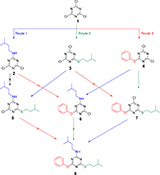
Preferential incorporation of nucleophiles onto TCT was found to be first phenol, second thiol and third amine. Phenol incorporation was achieved at −20°C which helped to replace the third ‘Cl’ at 35°C, which is compatible with a biological context. Atomic charges on ‘Cl’ (NBO calculations) were consistent with the experimental findings.
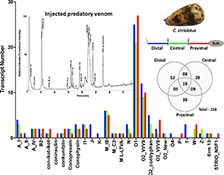
One hundred and fifty-eight conotoxins were identified in the venom transcriptome of the little studied C. striolatus from the fish hunting clade Pionoconus. Preferential expression in proximal versus distal duct suggested that its complex predatory venom may be expressed at multiple sites along the venom duct.
CH19594Peptidomimetic Modulators of BACE1
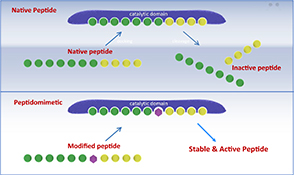
The insertion of β-amino acids or N-methylation into BACE substrates produces peptide analogues which can inhibit or stimulate BACE.

The formation of oxime linkages between complex and precious biomolecules is of great interest to basic research and pharmaceutical applications alike. In this work, we employ the water-stable Lewis acid Sc(OTf)3 as a co-catalyst with ortho-phenylenediamine in the oxime ligation to yield up to an order of magnitude rate enhancement over the catalysts when applied individually.
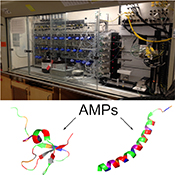
Antimicrobial peptides (AMPs) may serve as lead compounds for new classes of antibiotics. Therapeutic development is hampered, however, by an incomplete understanding of their functions. To facilitate systematic comparisons of AMP functions, we describe here methods for the efficient flow synthesis and purification of human AMPs.




